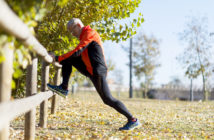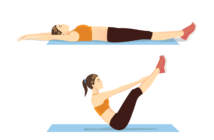We’re getting lazier, officially. Even as little as twenty years ago, as kids we were trusted to go out and explore and, in summer, we’d often be out all day and come back for dinner, shattered. Occasionally we’d go out again after dinner.
Now, for the fear of kids being abducted (overlooking human nature hasn’t changed in twenty years, only the hysteria over how media portrays modern life and the dangers involved), parents don’t let them out of their sight and can only go out under supervision and often when parents can be bothered to take them to the park or beach. In winter, kids often do not get out much at all.
So, we grow up with a lazy attitude. We then go into an office environment and sit around all day and wonder why, when we get to our 30s, we’re putting on weight – our metabolism slows, we eat more, move less and it takes its toll.
A recent WHO report estimates that 1 in 4 people, more than 1.4 billion people, do not get enough exercise and are in danger of poor health.
The World Health Organization (WHO), published in The Lancet, found that high-income countries were the worst, including the UK and USA. Worse, they found that modern messages about poor health were making no difference, finding that there were more people self-reporting they were inactive from 2001 compared to 2016. In these high-income countries, a staggering 37% of the population regarded themselves as ‘inactive’ in 2016.
It’s worth defining ‘inactive’ in this report as most people reading this will consider an inactive lifestyle to be sitting around most of the day and then going home on an evening and sitting on the couch all night. Not quite. WHO regards ‘inactive’ as people who did less than 150 minutes of moderate exercise – or 75 minutes at a vigorous intensity – a week. That’s at least 2 gym sessions a week for most people.
Women were found to be even less active than men, apart from in East and South-East Asia. The WHO found that we were taking more sedentary jobs and hobbies, along with increased use of motor transport to get to our jobs.
Some WHO guidelines for adults 19-64 are available. The report states that the WHO regards a minimum of 150 minutes of moderate activity or 75 minutes of vigorous aerobic activity every week, plus strength exercises of two days or more each week and breaking up periods of sitting around with light activity.
That’s quite a lot then. More than we’d expect. To meet the WHO ‘active’ minimum requirements, you need to be running or at a spin class at least twice a week, whilst aiming for a couple of sessions working all the muscle groups.




